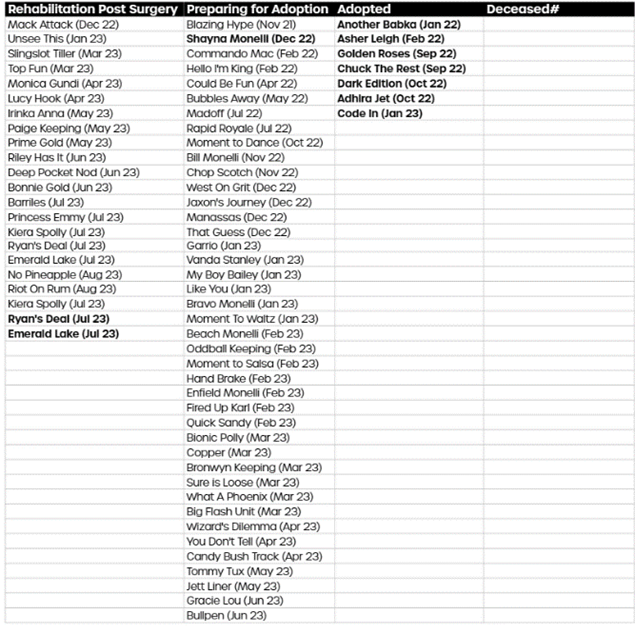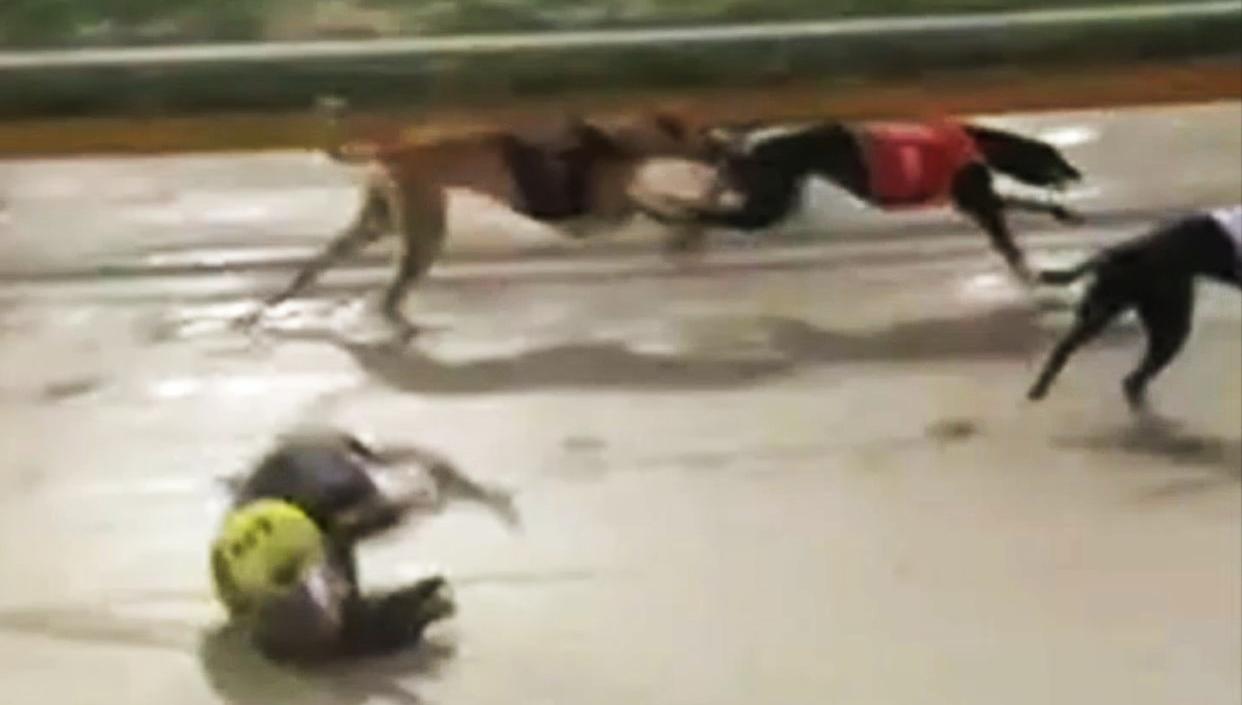by Lina Yordanova, CPG volunteer
December 10th is International Animal Rights Day. Given this, there are steps people can take to protect animal rights and ensure that they live a happy and fulfilling life.
Those steps include to:
- stop thinking of animals as human property and treat them as companions instead;
- abstain from using animal products;
- stop experimenting on animals;
- stop using animals for entertainment and a cheap way to make profit;
- stop hunting, fishing or doing anything that could hurt or kill an animal.
And yet, all of these rules are consistently broken by the greyhound racing industry. Despite many industry participants trying to convince us that “greyhounds do indeed enjoy racing”[1], the facts are that thousands of dogs suffer horrific injuries on a daily basis and are either forced to live in suffering, or, in most cases, they get ‘humanely’ euthanised[2]. In fact, deaths are so frequent that most greyhound tracks have a freezer used to store greyhound cadavers[3].
To make matters worse, many greyhounds end up being put down after suffering an easily treatable injury such as a broken leg[4]. This is because killing a dog is much cheaper than treating it and then kenneling it during recovery. However, injury rebate schemes6 exist in many areas of Australia. These involve state racing industry bodies providing limited financial and material support towards the recovery, rehabilitation (and sometimes rehoming) of greyhounds that have been injured during a race.
These schemes are not without flaws. Their big failing is a lack of transparency. Nothing is published about the amount of resources spent or the outcomes achieved. The only exception is Racing and Wagering Western Australia (RWWA) which makes monthly data on the outcomes of its scheme public and accessible (see the two tables below), although reveals nothing about expenditure in its annual reports.
The majority of WA’s injured greyhounds are able to recover and eventually are rehomed, but there are sometimes disasters and this happened with Wagtail Sage[5]. Wagtail was a racing greyhound who fractured his right hock at Cannington on 30 October 2019 after a collision with another dog on the home turn. He underwent surgery on his hock and spent two months’ recovery in kennels.
Due to complications, his right hind leg was amputated. Ten days later, the amputation site got infected and after a few long days of suffering, he was euthanised. No doubt if Wagtail had been receiving round-the-clock care while living with a foster carer, he would still be alive.
That said, injury schemes in other states don’t provide rehabilitation, or provide it on a very limited basis. Moreover, their lack of transparency means when they do, it could be making very little difference at all. For example, Greyhound Racing New South Wales (GRNSW) launched an updated injury scheme called the Greyhound Care Scheme 2.0. While this scheme claims to treat injured greyhounds and offer them a new chance at life, there is no publicly available information about which dogs are taken into care and the outcomes of their treatment. By comparison, WA does both and even lists in its daily stewards’ reports which injured dogs are being treated under its injury schemes. Every state and territory should be doing the same thing.
Additionally, the funds offered by the NSW GCS. 2.0 are capped at $5K, which is just only enough to treat a simple fracture, not a complex fracture which are commonplace. Unlike the WA scheme, state rebate schemes are not spending nearly as much time and resources on ensuring injured greys get a chance at a full recovery – instead they choose the easier approach – to euthanise them, or to provide minimal assistance.
If the goal truly is the wellbeing of the greyhounds, then things need to change. Other organisations need to adopt the approach of the WA scheme and put their best efforts into making certain that greyhounds get long-term care, before deciding that the only solution left is to put them down. Also, they must be just as transparent with their data by releasing monthly reports which are publicly accessible, as well as indicate in stewards’ reports which dogs are being treated under an injury scheme.
What can you do to help?

Fig. 2 RWWA Data November 2023 = Kennel Notes newsletter

[1] Do Greyhounds Enjoy Racing? – Oxford Stadium (oxford-stadium.co.uk)
[2] Two greyhounds euthanased at Dapto race with trial double-arm lure in use – ABC News
[3] 10 Misunderstood Facts of Greyhound Racing – CAGED NationWide (cagednw.co.uk)
[4] Australian tracks kill thirteen unlucky greyhounds in September 2023 – Coalition for the Protection of Greyhounds (greyhoundcoalition.com)
[5] Injury rebate schemes – Coalition for the Protection of Greyhounds (greyhoundcoalition.com)
[6]https://docs.google.com/document/d/1iEYGQGFt8caS9-LpWFMd-tNV9e2AhvD4AjLCCaohn0Q/edit?usp=sharing
Image shows Miss Indi dying from a broken neck while falling at high speed.
